Understanding Solar Panels: A Beginner’s Guide
Solar panels represent a significant advancement in renewable energy technology. They harness sunlight to generate electricity through photovoltaic cells. As more people seek sustainable energy solutions, understanding the different types and functionalities of solar panels becomes essential. There are various options available, each with distinct advantages and drawbacks. Exploring these aspects can illuminate the path toward informed energy choices. What factors should one consider before making the switch to solar power?
What Are Solar Panels?
Although solar panels are often associated with renewable energy, they are fundamentally devices that convert sunlight into electricity. Comprised primarily of photovoltaic cells, these panels capture solar radiation and transform it into usable electrical power. The technology behind solar panels has evolved considerably, resulting in various types, including monocrystalline, polycrystalline, and thin-film panels, each with unique characteristics and efficiencies. Solar panels can be installed on rooftops, ground-mounted systems, or integrated into building materials. Their increasing popularity is driven by the dual benefits of reducing electricity bills and contributing to environmental sustainability. As households and businesses seek cleaner energy solutions, solar panels represent a pivotal shift towards harnessing the sun’s abundant energy, promoting energy independence and reducing reliance on fossil fuels. Furthermore, renewable energy sources are projected to account for nearly 95% of the increase in global power capacity through 2026, underscoring the importance of solar technology in the energy transition.
How Do Solar Panels Work?
Understanding how solar panels work begins with the photovoltaic effect, a process that converts sunlight into electricity. This energy conversion involves the absorption of photons by semiconductor materials, which then generate an electric current. By examining these mechanisms, one can appreciate the efficiency and functionality of solar technology. Additionally, AI technology is being explored to optimize the performance of solar panels through predictive maintenance and efficiency monitoring.
Photovoltaic Effect Explained
The photovoltaic effect is a fundamental principle that enables solar panels to convert sunlight into electricity. This process begins when photons from sunlight strike the surface of a solar cell, typically made of semiconductor materials like silicon. The energy from the photons excites electrons, allowing them to break free from their atomic bonds. As these freed electrons move through the semiconductor, they create an electric current. This movement is facilitated by the structure of the solar cell, which includes layers that create an electric field. The photovoltaic effect is essential for harnessing solar energy, as it is the mechanism that transforms light energy into usable electrical energy, making solar technology a viable alternative energy source.
Energy Conversion Process
Solar panels operate through a systematic energy conversion process that efficiently transforms sunlight into electricity. When sunlight strikes the solar cells within the panels, photons are absorbed by semiconductor materials, typically silicon. This absorption excites electrons, allowing them to break free from their atomic bonds. The freed electrons create an electric current as they flow through the solar cell. A built-in electric field within the cell directs these electrons towards the metal conductive plates, generating direct current (DC) electricity. An inverter then converts this DC electricity into alternating current (AC), which is suitable for household use. Finally, the converted electricity can either be used immediately, stored in batteries, or fed back into the electrical grid, contributing to overall energy needs.
Types of Solar Panels
Various types of solar panels are available, each designed to meet specific energy needs and application requirements. The most common types include monocrystalline, polycrystalline, and thin-film solar panels. Monocrystalline panels, known for their high efficiency and space-saving design, are made from a single crystal structure. Polycrystalline panels, while slightly less efficient, are more affordable and are made from multiple crystal fragments. Thin-film solar panels are lightweight and flexible, making them suitable for unconventional surfaces, though they generally have lower efficiency rates compared to crystalline options. Each type comes with distinct advantages and limitations, allowing consumers to choose based on factors such as budget, installation space, and energy requirements. Understanding these differences is vital for making an informed decision. Additionally, adopting sustainable practices, such as reducing energy consumption, can enhance the benefits of solar energy systems.
Benefits of Installing Solar Panels
While many homeowners seek ways to reduce energy bills, installing solar panels offers a multitude of benefits beyond just cost savings. Solar panels provide an environmentally friendly alternative to traditional energy sources, greatly reducing carbon footprints. They harness renewable energy from the sun, which is abundant and sustainable. Additionally, solar installations can increase property value, making homes more attractive to potential buyers. Many regions also offer incentives, such as tax credits and rebates, further enhancing the financial appeal. Installing solar panels can lead to energy independence, minimizing reliance on grid power and insulating homeowners from rising energy costs. Overall, the decision to adopt solar technology contributes to both personal financial benefits and broader environmental advantages, promoting a lifestyle that prioritizes experiences over material possessions.
Considerations Before Going Solar
Before shifting to solar energy, individuals should evaluate their specific energy needs to guarantee the system meets their requirements. Additionally, understanding the initial investment costs and available local incentives can greatly impact the decision-making process. These factors play an essential role in determining the overall feasibility and benefits of solar panel installation. Furthermore, considering work-life balance is important as it can influence how individuals allocate time and resources to manage their solar energy systems effectively.
Energy Needs Assessment
Determining energy needs is a crucial step in the journey toward solar adoption, as it allows homeowners to understand their electricity consumption patterns and future energy requirements. This evaluation involves reviewing past utility bills to identify usage trends, including peak consumption times and seasonal variations. Homeowners should consider factors such as the size of their household, the efficiency of appliances, and potential lifestyle changes that could impact energy use. Additionally, examining energy efficiency measures, such as insulation and smart technologies, can help maximize the benefits of solar energy. By accurately evaluating their energy needs, homeowners can make informed decisions about the size and type of solar system that will best meet their unique requirements, ensuring optimal performance and satisfaction.
Initial Investment Costs
The initial investment costs associated with solar panel installation can vary considerably, often ranging from several thousand to tens of thousands of dollars. Key factors influencing these costs include the size of the system, the type and quality of the panels, and installation expenses. Homeowners must also consider additional costs such as permits, inspections, and potential upgrades to existing electrical systems. While the initial outlay may seem intimidating, it is essential to evaluate the long-term savings on energy bills and the potential increase in property value. In addition, financing options, such as loans and leases, can help mitigate upfront costs, allowing homeowners to pay over time while still benefiting from solar energy savings.
Local Incentives Availability
Local incentives play a crucial role in the decision-making process for homeowners considering solar panel installation. Many states and local governments offer financial incentives, including tax credits, rebates, and grants, which can greatly reduce the overall cost of solar projects. These incentives vary widely by location, reflecting different energy policies and goals. Homeowners are encouraged to research available programs in their area, as some incentives are time-sensitive or have limited funding. Additionally, local utility companies may provide net metering options or performance-based incentives, further enhancing savings. By taking advantage of these local incentives, homeowners can make solar energy more affordable and increase the return on investment, ultimately leading to a more sustainable energy future.
The Installation Process
Installing solar panels involves several key steps that guarantee peak performance and longevity. First, a site assessment is conducted to evaluate factors such as roof orientation, shading, and structural integrity. Next, a customized solar design is created based on energy needs and available space. After obtaining necessary permits, the installation team prepares the site, including mounting hardware and electrical components. The panels are then securely attached, followed by connecting the system to the inverter and the grid. Finally, a thorough inspection is performed to make certain everything meets safety and regulatory standards. Once completed, the solar system is activated, allowing homeowners to start harnessing renewable energy for their electricity needs. This meticulous process guarantees ideal efficiency and durability of the solar panel system.
Financing Your Solar Panel System
How can homeowners effectively finance their solar panel systems? Various options exist to accommodate different budgets and financial situations. Many homeowners consider solar loans, which allow them to pay for their systems over time, often with low-interest rates. Another popular choice is leasing solar panels, where homeowners pay a monthly fee to use the system without owning it outright. Government incentives, such as tax credits and rebates, can greatly reduce initial costs, making solar energy more accessible. Additionally, some utility companies offer financing programs that assist homeowners in managing expenses. By exploring these financing options, homeowners can make informed decisions and invest in solar energy solutions that align with their financial goals and sustainability aspirations.
Frequently Asked Questions
How Long Do Solar Panels Typically Last?
The lifespan of solar panels generally ranges from 25 to 30 years. Factors such as quality, installation, and maintenance can influence their longevity, with many manufacturers offering warranties that reflect this typical duration of performance.
Can Solar Panels Work in Cloudy Weather?
Solar panels can indeed function in cloudy weather, though their efficiency decreases compared to sunny conditions. They still capture diffused sunlight, allowing for energy production, albeit at a reduced rate compared to ideal conditions.
Do Solar Panels Require Maintenance?
Solar panels do require some maintenance to guarantee peak performance. This typically includes regular cleaning to remove debris, periodic inspections for damage, and occasional checks on the inverter and electrical connections to maintain efficiency.
What Happens to Solar Panels When It Snows?
When snow covers solar panels, their efficiency temporarily decreases as sunlight is blocked. However, the angle of most panels often allows snow to slide off, restoring functionality quickly once the snow melts or is cleared.
Are There Incentives for Solar Panel Installation?
Incentives for solar panel installation often include federal tax credits, state rebates, and net metering policies. These financial benefits encourage homeowners to adopt renewable energy, ultimately contributing to environmental sustainability and reduced electricity costs.
Conclusion
In summary, understanding solar panels is essential for anyone interested in renewable energy solutions. By grasping their functionality, types, and benefits, individuals can make informed decisions that suit their specific energy needs and financial situations. As the demand for sustainable energy grows, embracing solar technology not only contributes to personal savings but also supports broader environmental goals. With careful consideration and planning, shifting to solar energy can be a rewarding investment for the future.



